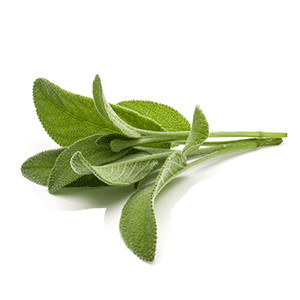Sage

Sage
Salvia officinalis
Plant family
Mint family (Lamiaceae)
Season Overview
Propagating
Planting
Harvest
Harvest
J
F
M
A
M
J
J
A
S
O
N
D
1ST YEAR
FOLLOWING YEARS
Details
Light requirement
Sunny
Water requirement
Dry
Soil
Light (sandy)
Nutrient requirement
Low
Light germinator
Plant distance
30 cm
Row spacing
30 cm
Seeding depth
0.5 cm
Instructions
The season for this plant is over. The following instructions are for the next season.
End of March
Propagating
Mid of April
Transplanting
Mid of April
Harden
Description
Sage is a small, expansive shrub from the labiates family. The conditionally hardy plant forms deep roots and prefers a very sunny location with well-drained, rather dry soil.
Origin:
Mediterranean region
Growing tips
If you cut back sage a little in the spring, you ensure a vital new sprout. The aroma of the leaves is strongest just before flowering, so this is the best time for larger harvests, e.g. for drying. Individual leaves are harvested. Down-bent branches form roots when they come in contact with the ground. The rooted shoots can be cut off and planted. This is an easy way to propagate the sage.
Companion Plants
Bean (Dwarf bean)
Bean (Runner bean)
Broccoli
Brussels sprouts
Cabbage (Cabbage)
Cabbage (Savoy cabbage)
Carrots
Cauliflower
Collard greens (Kale)
Collard greens (Tuscan kale / Dinosaur kale / Palm tree kale)
Common marigold
Coriander / Cilantro
Cress
Curry plant / Italian strawflower / Immortelle
Fennel
Kohlrabi / German turnip / Turnip cabbage
Lavender
Malva / Mallow
Melissa
Napa cabbage / Chinese cabbage
Oregano
Pak Choi
Pea
Rosemary
Savory
Thyme
Antagonistic Plants
Diseases
No diseases
Pests
Cicadas